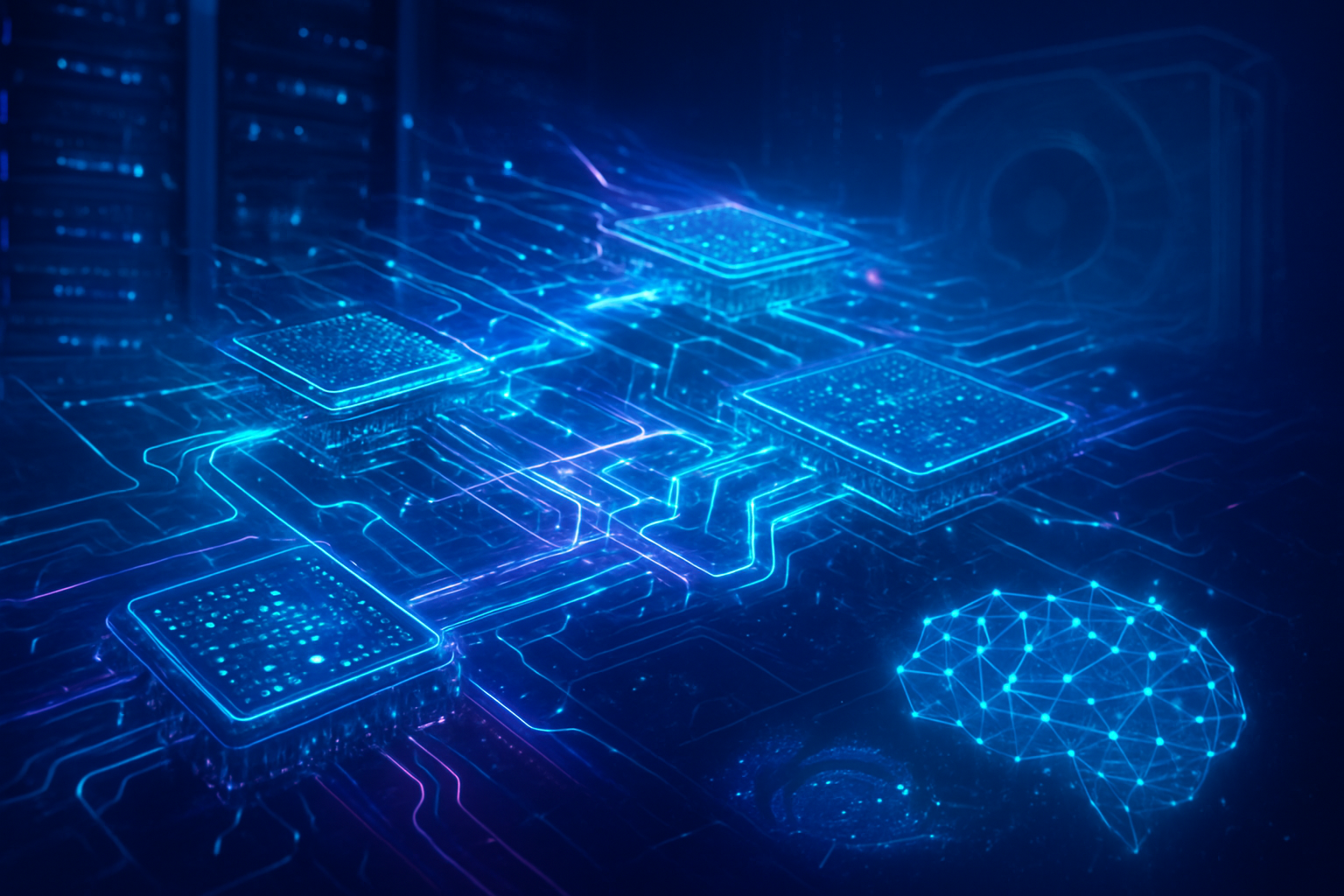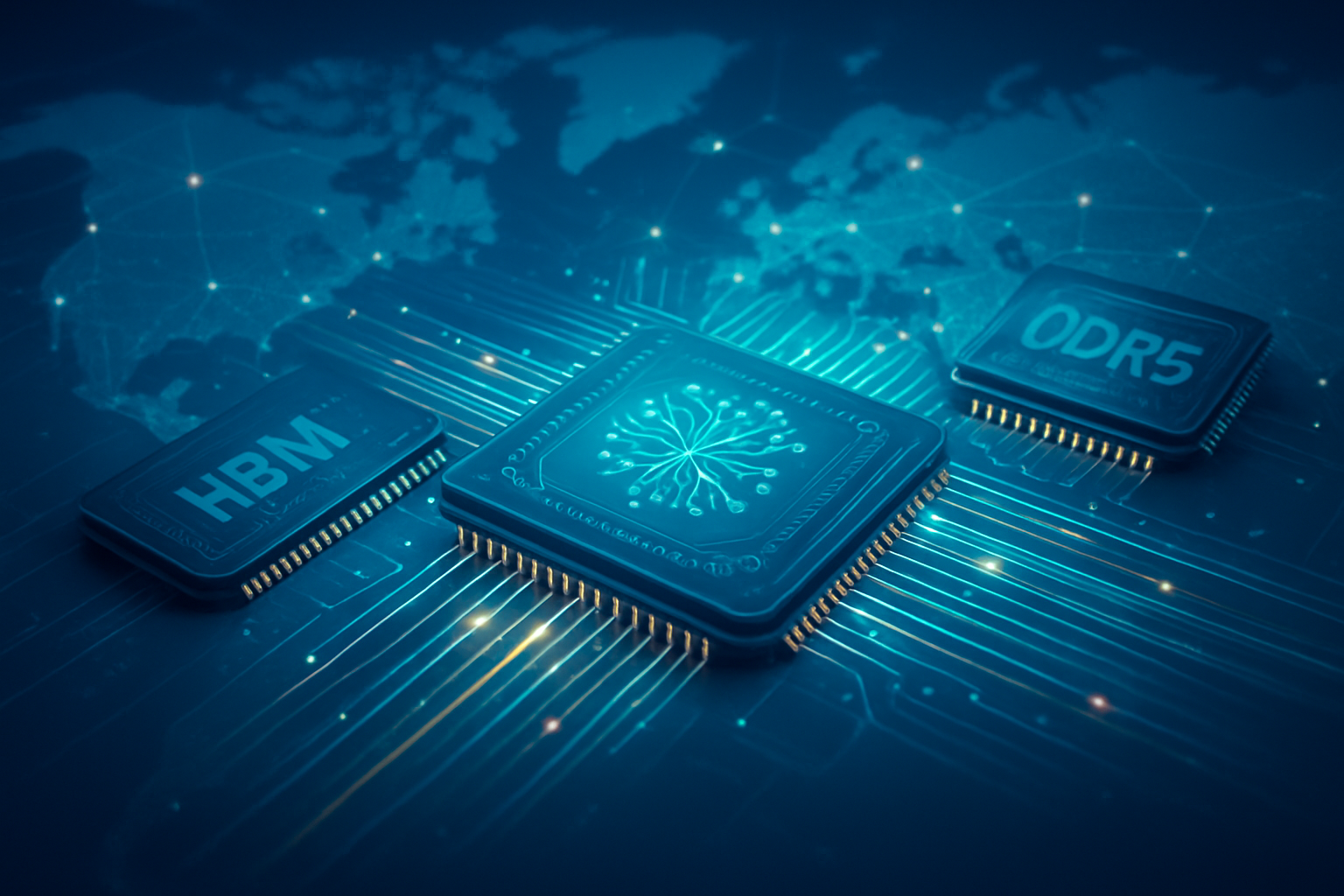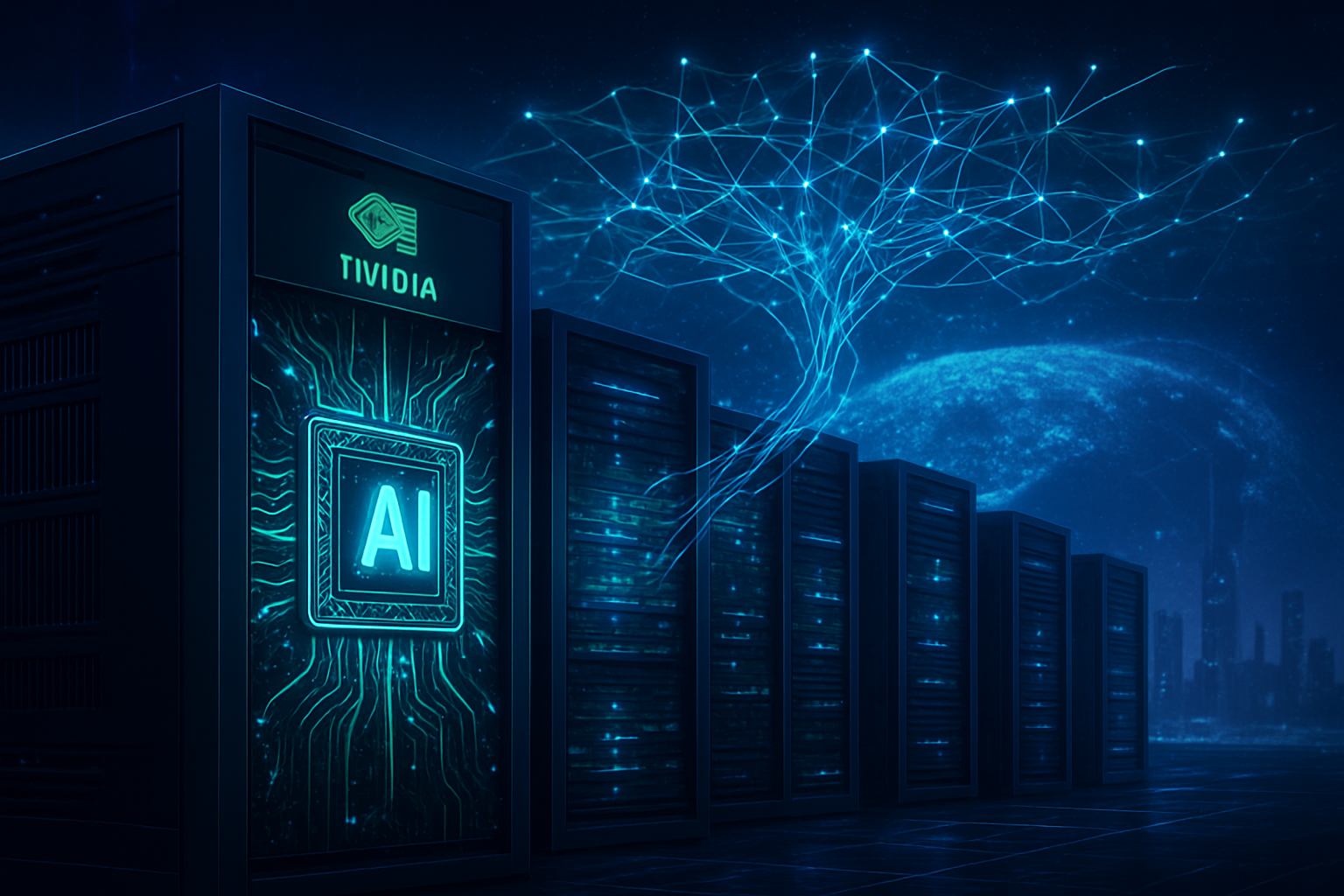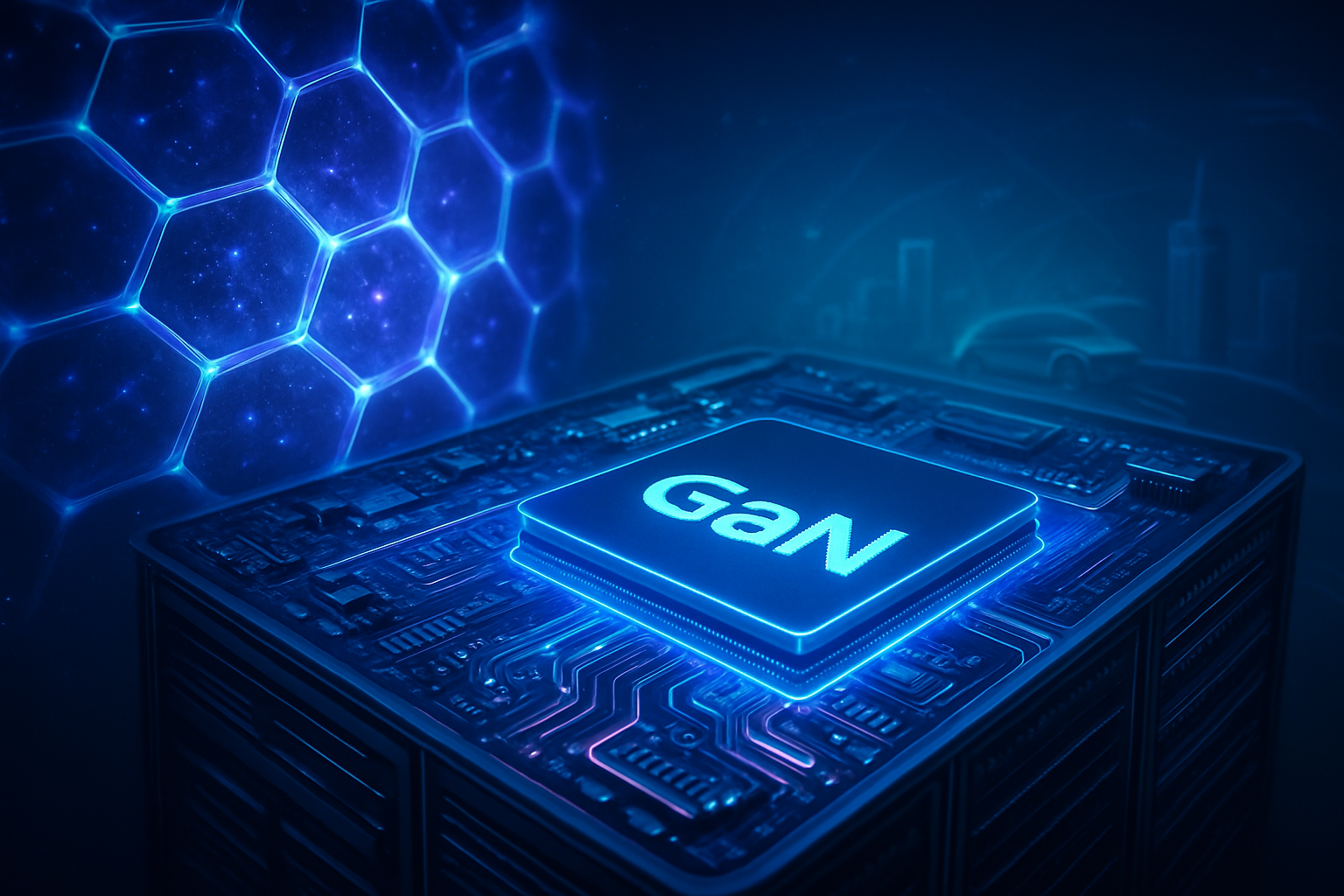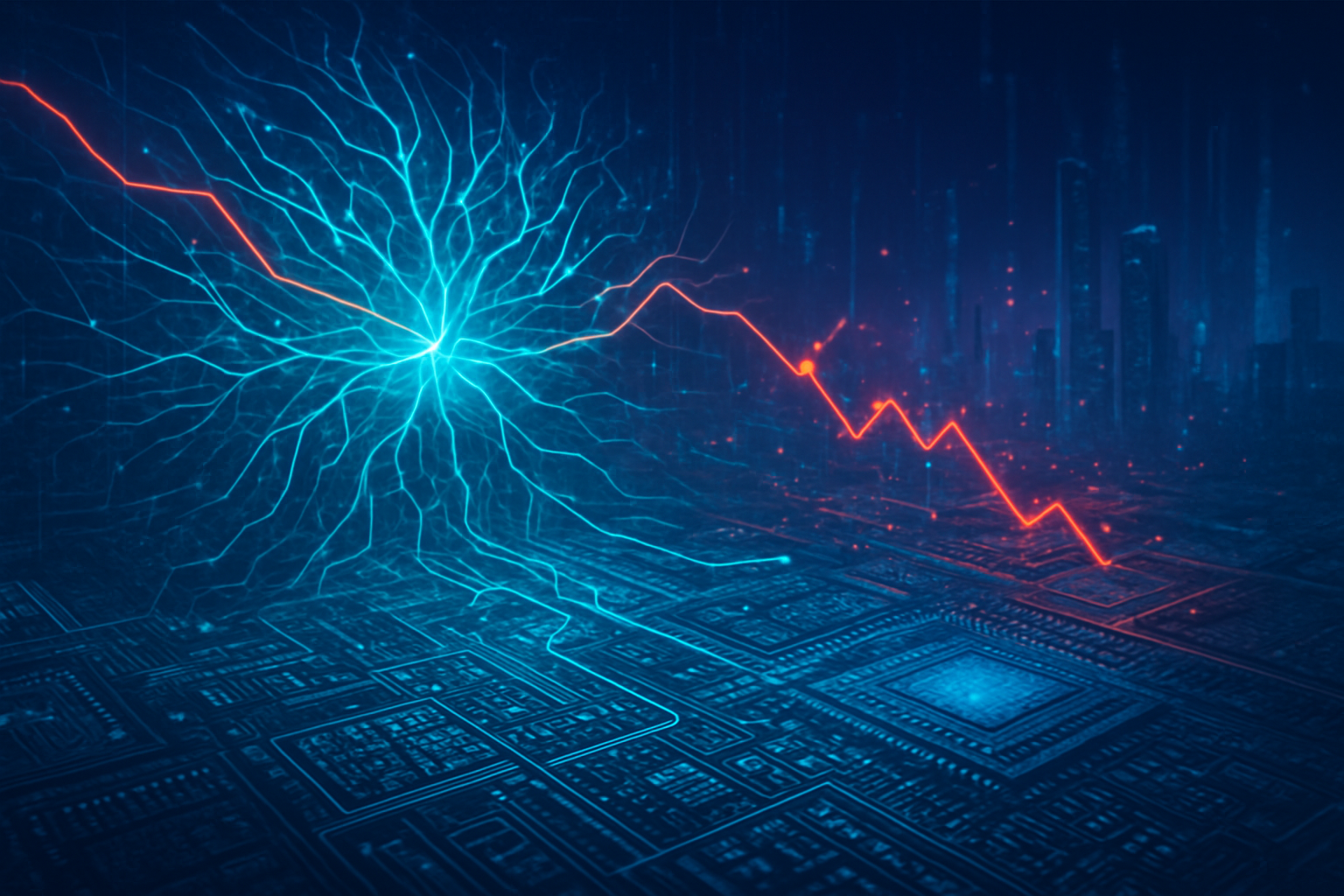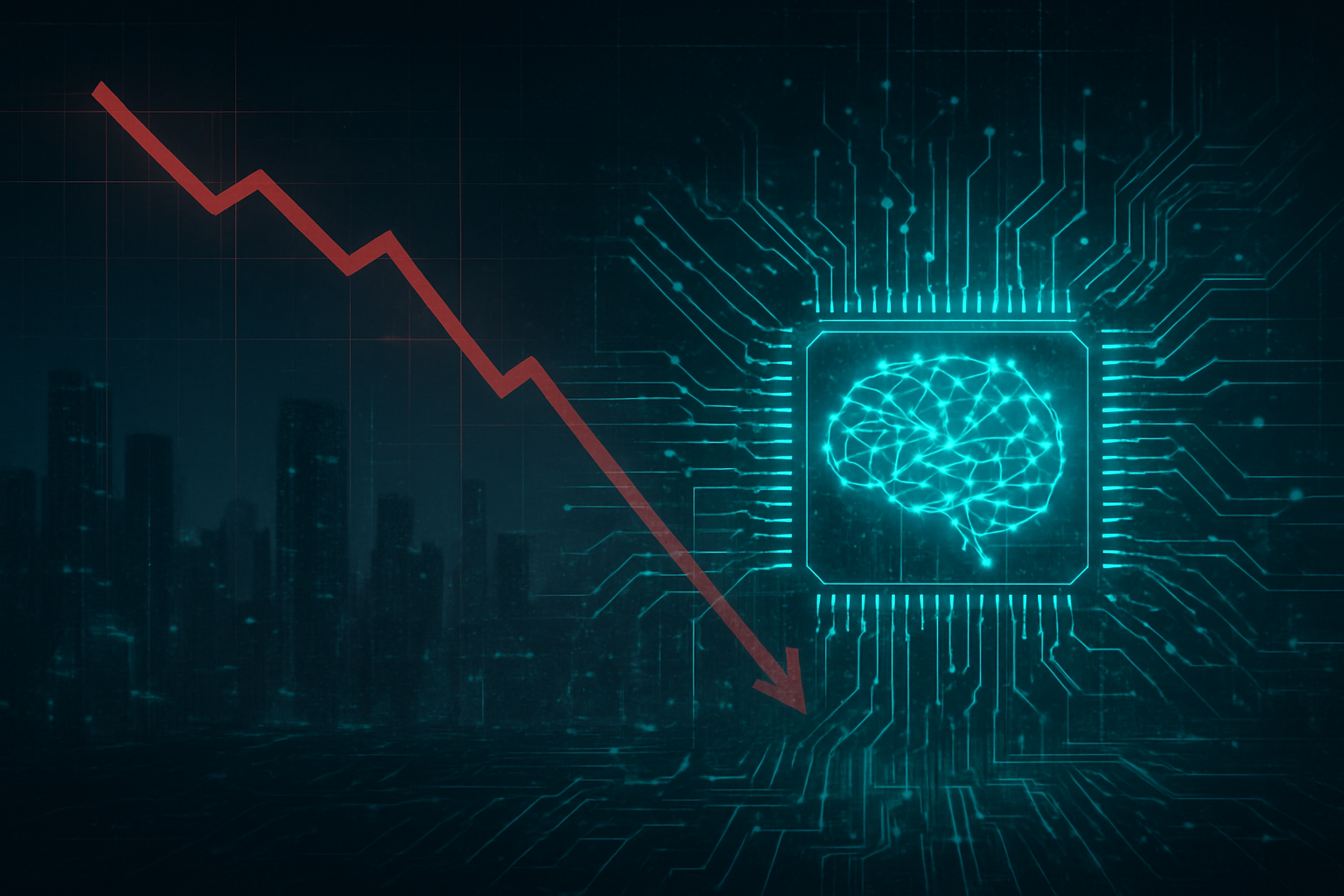In a bold move set to potentially reshape the artificial intelligence hardware landscape, Microsoft-backed d-Matrix has successfully closed a colossal $275 million Series C funding round, catapulting its valuation to an impressive $2 billion. Announced on November 12, 2025, this significant capital injection underscores investor confidence in d-Matrix's audacious claim: delivering up to 10 times faster AI performance, three times lower cost, and significantly better energy efficiency than current GPU-based systems, including those from industry giant Nvidia (NASDAQ: NVDA).
The California-based startup is not just promising incremental improvements; it's championing a fundamentally different approach to AI inference. At the heart of their innovation lies a novel "digital in-memory compute" (DIMC) architecture, designed to dismantle the long-standing "memory wall" bottleneck that plagues traditional computing. This breakthrough could herald a new era for generative AI deployments, addressing the escalating costs and energy demands associated with running large language models at scale.
The Architecture of Acceleration: Unpacking d-Matrix's Digital In-Memory Compute
At the core of d-Matrix's audacious performance claims is its "digital in-memory compute" (DIMC) technology, a paradigm shift from the traditional Von Neumann architecture that has long separated processing from memory. This separation creates a "memory wall" bottleneck, where data constantly shuffles between components, consuming energy and introducing latency. d-Matrix's DIMC directly integrates computation into the memory bit cell, drastically minimizing data movement and, consequently, energy consumption and latency – factors critical for memory-bound generative AI inference. Unlike analog in-memory compute, d-Matrix's digital approach promises noise-free computation and greater flexibility for future AI demands.
The company's flagship product, the Corsair™ C8 inference accelerator card, is the physical manifestation of DIMC. Each PCIe Gen5 card boasts 2,048 DIMC cores grouped into 8 chiplets, totaling 130 billion transistors. It features a hybrid memory approach: 2GB of integrated SRAM for ultra-high bandwidth (150 TB/s on a single card, an order of magnitude higher than HBM solutions) for low-latency token generation, and 256GB of LPDDR5 RAM for larger models and context lengths. The chiplet-based design, interconnected by a proprietary DMX Link™ based on OCP Open Domain-Specific Architecture (ODSA), ensures scalability and efficient inter-chiplet communication. Furthermore, Corsair natively supports efficient block floating-point numerics, known as Micro-scaling (MX) formats (e.g., MXINT8, MXINT4), which combine the energy efficiency of integer arithmetic with the dynamic range of floating-point numbers, vital for maintaining model accuracy at high efficiency.
d-Matrix asserts that a single Corsair C8 card can deliver up to 9 times the throughput of an Nvidia (NASDAQ: NVDA) H100 GPU and a staggering 27 times that of an Nvidia A100 GPU for generative AI inference workloads. The C8 is projected to achieve between 2400 and 9600 TFLOPs, with specific claims of 60,000 tokens/second at 1ms/token for Llama3 8B models in a single server, and 30,000 tokens/second at 2ms/token for Llama3 70B models in a single rack. Complementing the Corsair accelerators are the JetStream™ NICs, custom I/O accelerators providing 400Gbps bandwidth via PCIe Gen5. These NICs enable ultra-low latency accelerator-to-accelerator communication using standard Ethernet, crucial for scaling multi-modal and agentic AI systems across multiple machines without requiring costly data center overhauls.
Orchestrating this hardware symphony is the Aviator™ software stack. Co-designed with the hardware, Aviator provides an enterprise-grade platform built on open-source components like OpenBMC, MLIR, PyTorch, and Triton DSL. It includes a Model Factory for distributed inference, a Compressor for optimizing models to d-Matrix's MX formats, and a Compiler leveraging MLIR for hardware-specific code generation. Aviator also natively supports distributed inference across multiple Corsair cards, servers, and racks, ensuring that the unique capabilities of the d-Matrix hardware are easily accessible and performant for developers. Initial industry reactions, including significant investment from Microsoft's (NASDAQ: MSFT) M12 venture fund and partnerships with Supermicro (NASDAQ: SMCI) and GigaIO, indicate a strong belief in d-Matrix's potential to address the critical and growing market need for efficient AI inference.
Reshaping the AI Hardware Battleground: Implications for Industry Giants and Innovators
d-Matrix's emergence with its compelling performance claims and substantial funding is set to significantly intensify the competition within the AI hardware market, particularly in the burgeoning field of AI inference. The company's specialized focus on generative AI inference, especially for transformer-based models and large language models (LLMs) in the 3-60 billion parameter range, strategically targets a rapidly expanding segment of the AI landscape where efficiency and cost-effectiveness are paramount.
For AI companies broadly, d-Matrix's technology promises a more accessible and sustainable path to deploying advanced AI at scale. The prospect of dramatically lower Total Cost of Ownership (TCO) and superior energy efficiency could democratize access to sophisticated AI capabilities, enabling a wider array of businesses to integrate and scale generative AI applications. This shift could empower startups and smaller enterprises, reducing their reliance on prohibitively expensive, general-purpose GPU infrastructure for inference tasks.
Among tech giants, Microsoft (NASDAQ: MSFT), a key investor through its M12 venture arm, stands to gain considerably. As Microsoft continues to diversify its AI hardware strategy and reduce dependency on single suppliers, d-Matrix's cost- and energy-efficient inference solutions offer a compelling option for integration into its Azure cloud platform. This could provide Azure customers with optimized hardware for specific LLM workloads, enhancing Microsoft's competitive edge in cloud AI services by offering more predictable performance and potentially lower operational costs.
Nvidia (NASDAQ: NVDA), the undisputed leader in AI hardware for training, faces a direct challenge to its dominance in the inference market. While Nvidia's powerful GPUs and robust CUDA ecosystem remain critical for high-end training, d-Matrix's aggressive claims of 10x faster inference performance and 3x lower cost could force Nvidia to accelerate its own inference-optimized hardware roadmap and potentially re-evaluate its pricing strategies for inference-specific solutions. However, Nvidia's established ecosystem and continuous innovation, exemplified by its Blackwell architecture, ensure it remains a formidable competitor. Similarly, AMD (NASDAQ: AMD), aggressively expanding its presence with its Instinct series, will now contend with another specialized rival, pushing it to further innovate in performance, energy efficiency, and its ROCm software ecosystem. Intel (NASDAQ: INTC), with its multi-faceted AI strategy leveraging Gaudi accelerators, CPUs, GPUs, and NPUs, might see d-Matrix's success as validation for its own focus on specialized, cost-effective solutions and open software architectures, potentially accelerating its efforts in efficient inference hardware.
The potential for disruption is significant. By fundamentally altering the economics of AI inference, d-Matrix could drive a substantial shift in demand away from general-purpose GPUs for many inference tasks, particularly in data centers prioritizing efficiency and cost. Cloud providers, in particular, may find d-Matrix's offerings attractive for reducing the burgeoning operational expenses associated with AI services. This competitive pressure is likely to spur further innovation across the entire AI hardware sector, with a growing emphasis on specialized architectures, 3D DRAM, and in-memory compute solutions to meet the escalating demands of next-generation AI.
A New Paradigm for AI: Wider Significance and the Road Ahead
d-Matrix's groundbreaking technology arrives at a critical juncture in the broader AI landscape, directly addressing two of the most pressing challenges facing the industry: the escalating costs of AI inference and the unsustainable energy consumption of AI data centers. While AI model training often captures headlines, inference—the process of deploying trained models to generate responses—is rapidly becoming the dominant economic burden, with analysts projecting inference budgets to surpass training budgets by 2026. The ability to run large language models (LLMs) at scale on traditional GPU-based systems is immensely expensive, leading to what some call a "trillion-dollar infrastructure nightmare."
d-Matrix's promise of up to three times better performance per Total Cost of Ownership (TCO) directly confronts this issue, making generative AI more commercially viable and accessible. The environmental impact of AI is another significant concern. Gartner predicts a 160% increase in data center energy consumption over the next two years due to AI, with 40% of existing AI data centers potentially facing operational constraints by 2027 due to power availability. d-Matrix's Digital In-Memory Compute (DIMC) architecture, by drastically reducing data movement, offers a compelling solution to this energy crisis, claiming 3x to 5x greater energy efficiency than GPU-based systems. This efficiency could enable one data center deployment using d-Matrix technology to perform the work of ten GPU-based centers, offering a clear path to reducing global AI power consumption and enhancing sustainability.
The potential impacts are profound. By making AI inference more affordable and energy-efficient, d-Matrix could democratize access to powerful generative AI capabilities for a broader range of enterprises and data centers. The ultra-low latency and high-throughput capabilities of the Corsair platform—capable of generating 30,000 tokens per second at 2ms latency for Llama 70B models—could unlock new interactive AI applications, advanced reasoning agents, and real-time content generation previously constrained by cost and latency. This could also fundamentally reshape data center infrastructure, leading to new designs optimized for AI workloads. Furthermore, d-Matrix's emergence fosters increased competition and innovation within the AI hardware market, challenging the long-standing dominance of traditional GPU manufacturers.
However, concerns remain. Overcoming the inertia of an established GPU ecosystem and convincing enterprises to switch from familiar solutions presents an adoption challenge. While d-Matrix's strategic partnerships with OEMs like Supermicro (NASDAQ: SMCI) and AMD (NASDAQ: AMD) and its standard PCIe Gen5 card form factor help mitigate this, demonstrating seamless scalability across diverse workloads and at hyperscale is crucial. The company's future "Raptor" accelerator, promising 3D In-Memory Compute (3DIMC) and RISC-V CPUs, aims to address this. While the Aviator software stack is built on open-source frameworks to ease integration, the inherent risk of ecosystem lock-in in specialized hardware markets persists. As a semiconductor company, d-Matrix is also susceptible to global supply chain disruptions, and it operates in an intensely competitive landscape against numerous startups and tech giants.
Historically, d-Matrix's architectural shift can be compared to other pivotal moments in computing. Its DIMC directly tackles the "memory wall" problem, a fundamental architectural improvement akin to earlier evolutions in computer design. This move towards highly specialized architectures for inference—predicted to constitute 90% of AI workloads in the coming years—mirrors previous shifts from general-purpose to specialized processing. The adoption of chiplet-based designs, a trend also seen in other major tech companies, represents a significant milestone for scalability and efficiency. Finally, d-Matrix's native support for block floating-point numerical formats (Micro-scaling, or MX formats) is an innovation akin to previous shifts in numerical precision (e.g., FP32 to FP16 or INT8) that have driven significant efficiency gains in AI. Overall, d-Matrix represents a critical advancement poised to make AI inference more sustainable, efficient, and cost-effective, potentially enabling a new generation of interactive and commercially viable AI applications.
The Future is In-Memory: d-Matrix's Roadmap and the Evolving AI Hardware Landscape
The future of AI hardware is being forged in the crucible of escalating demands for performance, energy efficiency, and cost-effectiveness, and d-Matrix stands poised to play a pivotal role in this evolution. The company's roadmap, particularly with its next-generation Raptor accelerator, promises to push the boundaries of AI inference even further, addressing the "memory wall" bottleneck that continues to challenge traditional architectures.
In the near term (2025-2028), the AI hardware market will continue to see a surge in specialized processors like TPUs and ASICs, offering higher efficiency for specific machine learning and inference tasks. A significant trend is the growing emphasis on edge AI, demanding low-power, high-performance chips for real-time decision-making in devices from smartphones to autonomous vehicles. The market is also expected to witness increased consolidation and strategic partnerships, as companies seek to gain scale and diversify their offerings. Innovations in chip architecture and advanced cooling systems will be crucial for developing energy-efficient hardware to reduce the carbon footprint of AI operations.
Looking further ahead (beyond 2028), the AI hardware market will prioritize efficiency, strategic integration, and demonstrable Return on Investment (ROI). The trend of custom AI silicon developed by hyperscalers and large enterprises is set to accelerate, leading to a more diversified and competitive chip design landscape. There will be a push towards more flexible and reconfigurable hardware, where silicon becomes almost as "codable" as software, adapting to diverse workloads. Neuromorphic chips, inspired by the human brain, are emerging as a promising long-term innovation for cognitive tasks, and the potential integration of quantum computing with AI hardware could unlock entirely new capabilities. The global AI hardware market is projected to grow significantly, reaching an estimated $76.7 billion by 2030 and potentially $231.8 billion by 2035.
d-Matrix's next-generation accelerator, Raptor, slated for launch in 2026, is designed to succeed the current Corsair and handle even larger reasoning models by significantly increasing memory capacity. Raptor will leverage revolutionary 3D In-Memory Compute (3DIMC) technology, which involves stacking DRAM directly atop compute modules in a 3D configuration. This vertical stacking dramatically reduces the distance data must travel, promising up to 10 times better memory bandwidth and 10 times greater energy efficiency for AI inference workloads compared to existing HBM4 technology. Raptor will also upgrade to a 4-nanometer manufacturing process from Corsair's 6-nanometer, further boosting speed and efficiency. This development, in collaboration with ASIC leader Alchip, has already been validated on d-Matrix's Pavehawk test silicon, signaling a tangible path to these "step-function improvements."
These advancements will enable a wide array of future applications. Highly efficient hardware is crucial for scaling generative AI inference and agentic AI, which focuses on decision-making and autonomous action in fields like robotics, medicine, and smart homes. Physical AI and robotics, requiring hardened sensors and high-fidelity perception, will also benefit. Real-time edge AI will power smart cities, IoT devices, and advanced security systems. In healthcare, advanced AI hardware will facilitate earlier disease detection, at-home monitoring, and improved medical imaging. Enterprises will leverage AI for strategic decision-making, automating complex tasks, and optimizing workflows, with custom AI tools becoming available for every business function. Critically, AI will play a significant role in helping businesses achieve carbon-neutral operations by optimizing demand and reducing waste.
However, several challenges persist. The escalating costs of AI hardware, including power and cooling, remain a major barrier. The "memory wall" continues to be a performance bottleneck, and the increasing complexity of AI hardware architectures poses design and testing challenges. A significant talent gap in AI engineering and specialized chip design, along with the need for advanced cooling systems to manage substantial heat generation, must be addressed. The rapid pace of algorithmic development often outstrips the slower cycle of hardware innovation, creating synchronization issues. Ethical concerns regarding data privacy, bias, and accountability also demand continuous attention. Finally, supply chain pressures, regulatory risks, and infrastructure constraints for large, energy-intensive data centers present ongoing hurdles.
Experts predict a recalibration in the AI and semiconductor sectors, emphasizing efficiency, strategic integration, and demonstrable ROI. Consolidation and strategic partnerships are expected as companies seek scale and critical AI IP. There's a growing consensus that the next phase of AI will be defined not just by model size, but by the ability to effectively integrate intelligence into physical systems with precision and real-world feedback. This means AI will move beyond just analyzing the world to physically engaging with it. The industry will move away from a "one-size-fits-all" approach to compute, embracing flexible and reconfigurable hardware for heterogeneous AI workloads. Experts also highlight that sustainable AI growth requires robust business models that can navigate supply chain complexities and deliver tangible financial returns. By 2030-2040, AI is expected to enable nearly all businesses to run a carbon-neutral enterprise and for AI systems to function as strategic business partners, integrating real-time data analysis and personalized insights.
Conclusion: A New Dawn for AI Inference
d-Matrix's recent $275 million funding round and its bold claims of 10x faster AI performance than Nvidia's GPUs mark a pivotal moment in the evolution of artificial intelligence hardware. By championing a revolutionary "digital in-memory compute" architecture, d-Matrix is directly confronting the escalating costs and energy demands of AI inference, a segment projected to dominate future AI workloads. The company's integrated platform, comprising Corsair™ accelerators, JetStream™ NICs, and Aviator™ software, represents a holistic approach to overcoming the "memory wall" bottleneck and delivering unprecedented efficiency for generative AI.
This development signifies a critical shift towards specialized hardware solutions for AI inference, challenging the long-standing dominance of general-purpose GPUs. While Nvidia (NASDAQ: NVDA) remains a formidable player, d-Matrix's innovations are poised to democratize access to advanced AI, empower a broader range of enterprises, and accelerate the industry's move towards more sustainable and cost-effective AI deployments. The substantial investment from Microsoft (NASDAQ: MSFT) and other key players underscores the industry's recognition of this potential.
Looking ahead, d-Matrix's roadmap, featuring the upcoming Raptor accelerator with 3D In-Memory Compute (3DIMC), promises further architectural breakthroughs that could unlock new frontiers for agentic AI, physical AI, and real-time edge applications. While challenges related to adoption, scalability, and intense competition remain, d-Matrix's focus on fundamental architectural innovation positions it as a key driver in shaping the next generation of AI computing. The coming weeks and months will be crucial as d-Matrix moves from ambitious claims to broader deployment, and the industry watches to see how its disruptive technology reshapes the competitive landscape and accelerates the widespread adoption of advanced AI.
This content is intended for informational purposes only and represents analysis of current AI developments.
TokenRing AI delivers enterprise-grade solutions for multi-agent AI workflow orchestration, AI-powered development tools, and seamless remote collaboration platforms.
For more information, visit https://www.tokenring.ai/.
